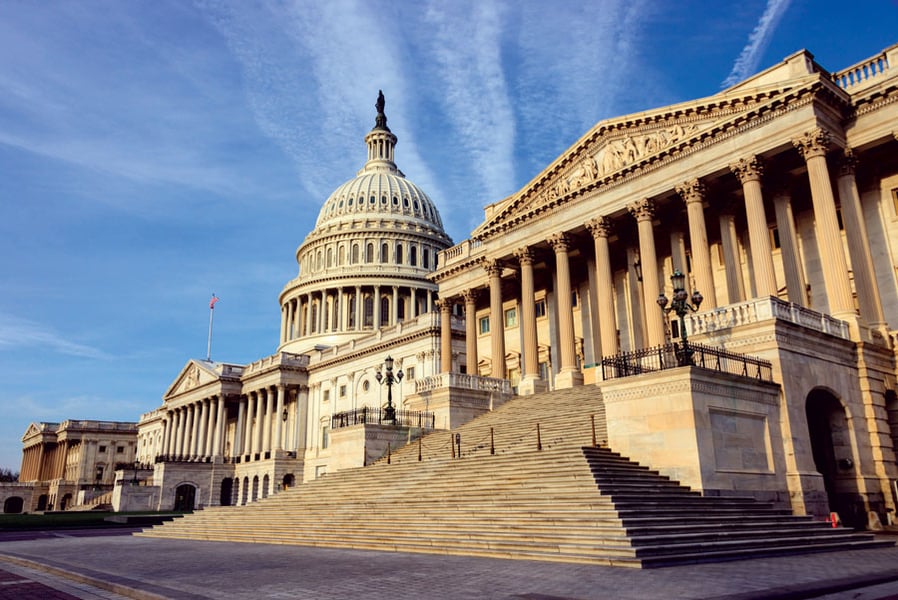

Comprehensive retirement savings legislation was tucked into the bowels of a massive government spending bill released early Tuesday morning that's headed toward approval by the end of the week despite some stubborn Republican resistance.
The $1.7 trillion omnibus appropriations legislation includes among its 4,155 pages the SECURE 2.0 Act, a wide-ranging measure designed to increase the number of employers offering retirement plans and Americans building nest eggs. It has gained strong bipartisan support along its legislative journey this year.
The spending bill on which SECURE 2.0 is hitching a ride, however, is generating opposition from some House and Senate Republicans. The measure would fund the government through next September.
Some GOP members want Congress to approve a short-term continuing resolution that pushes the larger budget decision into next year and gives a House with a Republican majority in January a chance to vote on it. Such a move would put into limbo legislation, such as SECURE 2.0, that must be passed before the current session of Congress concludes at the end of the month.
An insurance industry lobbyist who has been working to get SECURE 2.0 over the finish line is confident that’s where it will end up later this week.
“It’s going to become law, probably by Friday,” Paul Richman, chief government and political affairs officer at the Insured Retirement Institute, said of the spending bill. “Will there be some opposition? Yes. Will it be sufficient to stop the bill? No.”
The Senate is expected to vote on the bill first, probably by Thursday. The House will follow at the end of the week. If Congress does not approve the omnibus spending package by Friday night, the government will shut down as the current continuing resolution expires. A winter storm forecast for much of the nation just before Christmas may help spur final congressional action.
The SECURE 2.0 portion of the larger bill encompasses 92 provisions, according to a 19-page summary distributed by congressional staff.
They would expand automatic enrollment in retirement plans; boost retirement savings for low-income workers; improve coverage for part-time workers; raise the required minimum distribution age from 72 to 75; increase the ceiling on catch-up retirement savings contributions for people between 60 and 63; allow employers to match student loan payments with retirement plan contributions; enable 403(b) plans to participate in multiple employer plans; and make it easier to incorporate annuities in retirement programs, among many other policy changes.
“Overall, it’s certainly a positive step toward retirement security policy, building on what happened in 2019,” said Chris Spence, managing director and head of federal government relations at TIAA. “There are so many provisions, it’s hard to pick just one” as being the most important.
The legislation is a sequel to the landmark Setting Up Every Community for Retirement Enhancement Act that Congress approved in 2019. The follow-up bill, which was designated SECURE 2.0, has been making its way through the legislative process this year.
The legislation in the appropriations bill was cobbled together from a bill overwhelmingly approved by the House and separate measures passed by Senate committees earlier this year.
Although the overall spending bill has stoked opposition, the SECURE 2.0 portion was praised Tuesday by a spectrum of Republicans and Democrats who often are on opposite sides of other issues.
Financial industry lobbyists have been urging lawmakers to complete work on the bill this year, touting how it would bolster retirement security.
Last month, the American Council on Life Insurers released its study of the Joint Committee on Taxation’s revenue estimates for SECURE 2.0 that showed it would produce more than $80 billion in retirement savings over 10 years.
“The retirement security provisions have strong bipartisan support because they encourage saving by millions of people from part-time workers to military spouses and small business employees,” ACLI spokesperson Whit Cornman said in a statement.
The SECURE 2.0 effort demonstrates lawmakers are listening to constituents who are worried about whether they will be able to finance their retirements, Richman said.
“The provisions in the bill over the next 10 years will provide billions more in retirement savings to workers and retirees at all income levels,” he said.

Executives from LPL Financial, Cresset Partners hired for key roles.

Geopolitical tension has been managed well by the markets.

December cut is still a possiblity.

Canada, China among nations to react to president-elect's comments.

For several years, Leech allegedly favored some clients in trade allocations, at the cost of others, amounting to $600 million, according to the Department of Justice.
Streamline your outreach with Aidentified's AI-driven solutions
This season’s market volatility: Positioning for rate relief, income growth and the AI rebound
